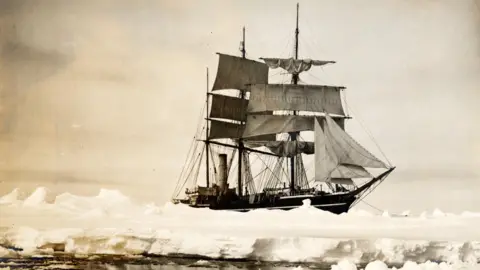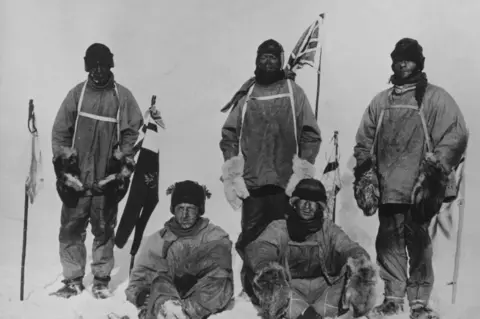Detailed underwater footage reveals Captain Scott’s Terra Nova shipwreck
A recent expedition has recorded the century-old polar vessel on the seabed off Greenland, showing extensive marine colonisation while wooden features remain identifiable.
An expedition has for the first time recorded detailed footage of the Terra Nova, the ship that carried Captain Robert Falcon Scott on his ill-fated 1910–12 Antarctic expedition, capturing the vessel on the sea floor off the coast of Greenland.
The footage, taken at about 170 metres depth, shows the wooden hull largely colonised by marine life but still preserving identifiable features, including the wheel, a winch and a mast. The images provide new, high-resolution documentation of one of the most famous polar shipwrecks and the state of its preservation after more than a century underwater.

The Terra Nova is inseparable from the tragic story of Scott and his party, who reached the South Pole in 1912 only to find they had been beaten by Roald Amundsen’s Norwegian team. Scott and four companions died on the return journey. After that expedition, the ship returned to commercial service and later sank in 1943 while carrying supplies to U.S. bases during World War II.
The wreck was first located by the Schmidt Ocean Institute in 2012, but this recent mission — the first to gather extensive, close-range video and photographic records — enabled researchers to survey the site in much greater detail. Investigators reported that soft tissues and fragile fittings have long been colonised by an array of marine organisms, while more robust wooden structures remain intact enough to identify fittings and deck equipment.

Researchers described the images as valuable both for maritime history and for studies of deep-sea ecology and preservation processes. Wreck sites in cold, deep waters often experience slower rates of decay than those in warmer or shallower seas, and well-documented imagery helps experts understand how wood and metal degrade and how marine communities establish themselves on submerged cultural heritage.
The Terra Nova’s new imagery also supplies material for historians seeking to trace the vessel’s later service and final voyage. While the ship is globally known for its role in the Antarctic expedition, its operational life extended into the mid-20th century, including wartime logistics work that ended with its sinking in the North Atlantic. The location and condition of the wreck off Greenland have attracted interest from archaeologists, historians and conservation specialists.

The recent documentation follows international efforts to map and monitor submerged cultural heritage sites and to balance research access with preservation concerns. Video and photographic surveys are non-invasive tools that allow scientists to study condition and context without disturbing sites. The new material on the Terra Nova adds to a growing archive that specialists can use to monitor changes over time and to inform any future conservation decisions.
Scientists involved with the survey have made the imagery available for further study, and museum and academic researchers are expected to analyse the footage to refine timelines of decay and colonisation and to place the wreck more precisely within the vessel’s documented operational history. The images join earlier discoveries to give a more complete picture of a ship that remains a potent symbol of early polar exploration and of the intersection of human history with deep-sea environments.